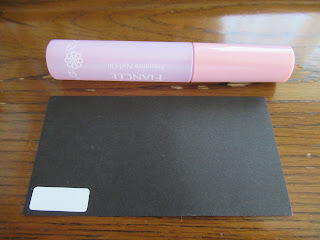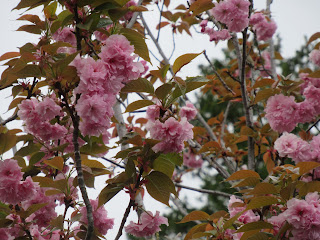Er … a sort of Naomi’s boom for Spring 2023. I’m in for collecting pollens these days. It’s not for culinary purposes or something, but to admire them under microscope. Actually, last fall when I walked Niiharu Citizen Forest with the researchers from Kanagawa Prefectural Museum of Natural History, they taught me this fun. The way to collect pollens is simple.
<What you need>
1. Black construction paper, cut into, … er … 3cm*5cm cards, or in a similar size.
The card is small enough to carry to a field, but large enough to work with.
2. Transparent Scotch tape, preferably 2cm or so wide.
1. Put 2-3 cm long scotch tape on a flower, gently push the sticky side on the stamen to collect pollens.
2. Paste the scotch tape with pollens on a card of construction paper.
 |
| I pasted the tape with pollens on a construction paper card … |
 |
| and admire them under a microscope on my desk. |
I’m still sorting out my collection ... This week, I’ll show you some of my cards for the flowers of Asteraceae family.
Oriental false hawksbeard
So far, this looks the most appetizing as a candy, don’t you think?
Eastern daisy fleabane
It’s interesting the pollens from the same family look similar each other. I mean, pollens for Asteraceae family all have spikes … like COVID viruses … Are the spikes do something for their procreation? For contrast, here is from another family, Garryaceae to be exact.
657 Nanasawa, Atsugi City, 243-0121
〒243-0121 厚木市七沢657
Phone: 046-248-0323
You can send an enquiry to them by clicking the bottom line of their homepage at http://www.pref.kanagawa.jp/div/1644/





































